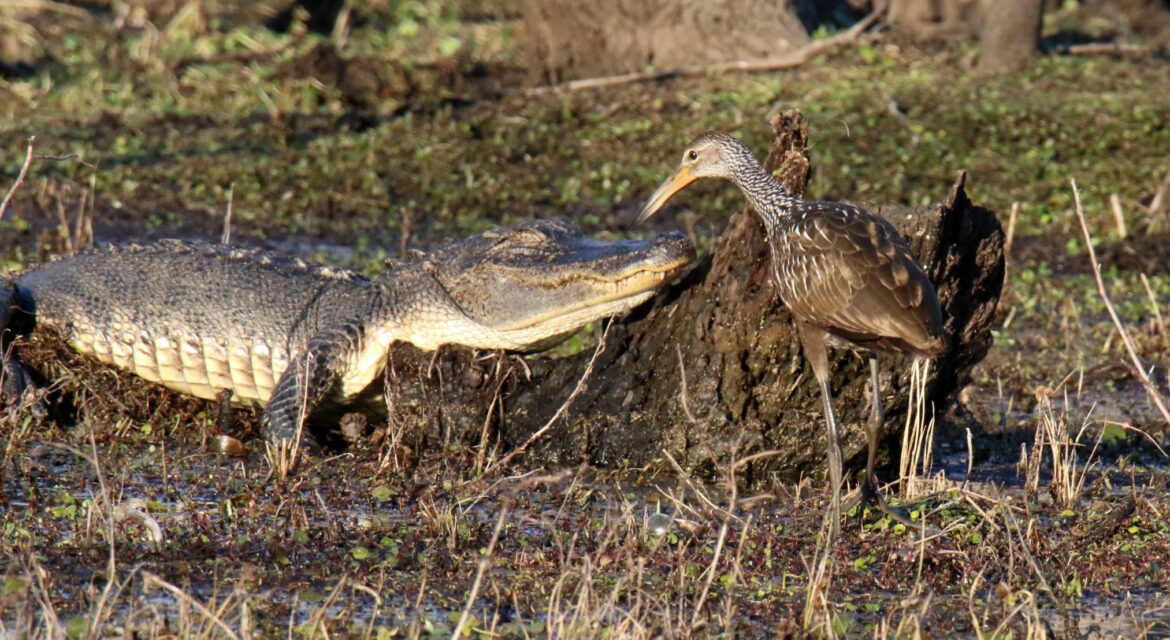
Kayla Pringle
Back when I was a graduate student studying ecology in Michigan, my ornithology class took a short road trip to Toledo, Ohio to visit the Ottawa National Wildlife Refuge. My professor had heard that there was a Limpkin sighting, a rare bird for the area. At the time, Limpkins were known for being restricted to the Florida region (in the United States) and are residents of South America, as well. This was my very first encounter with Limpkins, which is pretty amazing since this bird was so far from is residential region of Florida and South America.
While we were at the refuge, we encountered many different birders trying to get a glimpse of this bird. If I remember correctly, my professor had expressed that he has never seen a Limpkin this far north before. Limpkins have been spotted as far north as Eastern Canada, buts its extremely rare for them to travel this far. According to eBird, the first Limpkin sighting in Ohio was in 2019, and only 638 sightings in Ohio have been recorded since then with a 0.0320% frequency. This means that seeing this bird in Ohio is extremely rare.
Limpkins are rather large, heron-like birds, that have a long, decurved bill that is slightly twisted at the end. Why is the bill twisted? Well, that’s because their favorite food is apple snails. The twist at the very end of the bill is used to help crack open apple snail shells for consumption. Florida has its own native apple snail species, but there are many invasive species of apple snails that have infiltrated Florida and many other states.
Now, in 2025, Gulf Coast Bird Observatory just completed our annual Christmas Bird Count in the Brazoria-Columbia Bottomlands, and I was able to participate. During the CBC, we gather in small groups and count birds for the whole day across the designated area. This is done to get a good idea of what birds we are seeing around the same time every year, and to see if we have any rare birds in our area. CBCs help to inform bird conservation and research and happen all over the country.
During the CBC on Saturday, I was lucky enough to spot not one, but two Limpkins! Several people from other groups reported that they spotted Limpkins as well. We even found some empty apple snail shells around some of the waterways they were spotted near. Even though it was so cool to see Limpkins again because they’re such a fun bird to observe, it made me wonder why we are seeing so many more Limpkin sightings in other states besides Florida.
There isn’t much research completed regarding Limpkins yet, but the main hypothesis for why they are expanding their range is because food availability is high due the boom in apple snail species, that their own populations have increased. Limpkins might be a natural form of biocontrol for these invasive snail species, but more research needs to be done before we can say if this is true or not.
If you’ve never encountered a Limpkin before, I strongly suggest you try and see one at some point. If you’re looking for one, you download the eBird app and see if you’re near any sightings! These birds are worth observing, if only to hear their unique call and see them searching for snails in the mud. As always, thanks for reading, and if you’re able, go out and find yourself a Limpkin. You won’t regret it!
Photo credit: Sheryl Travis
Photo caption: A Limpkin and an alligator

